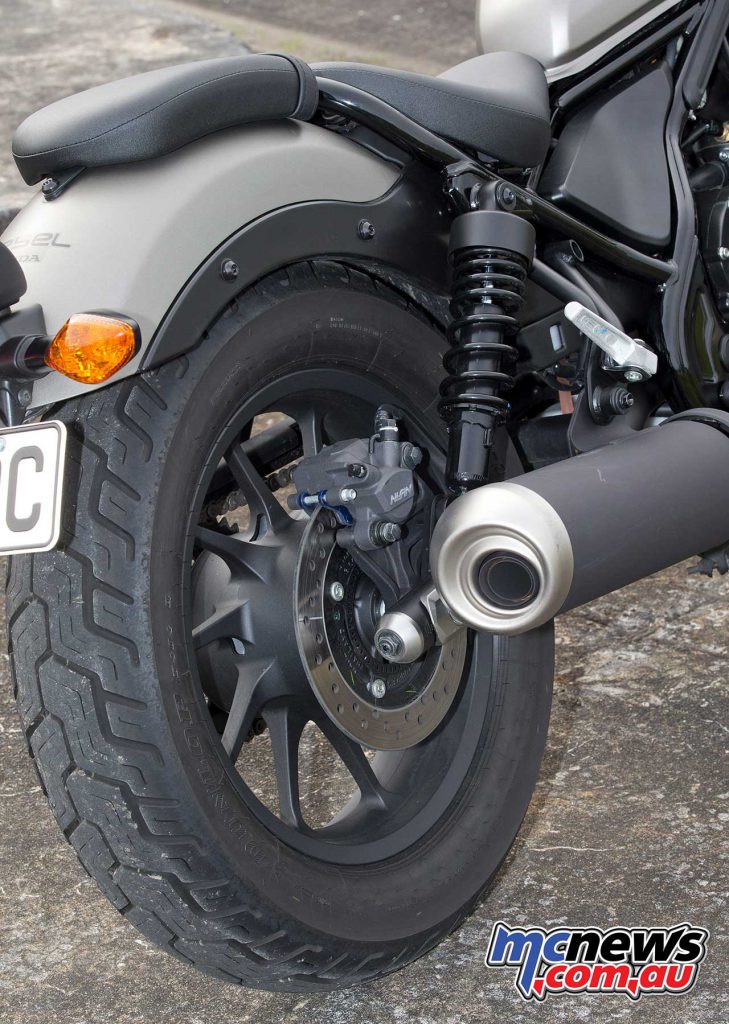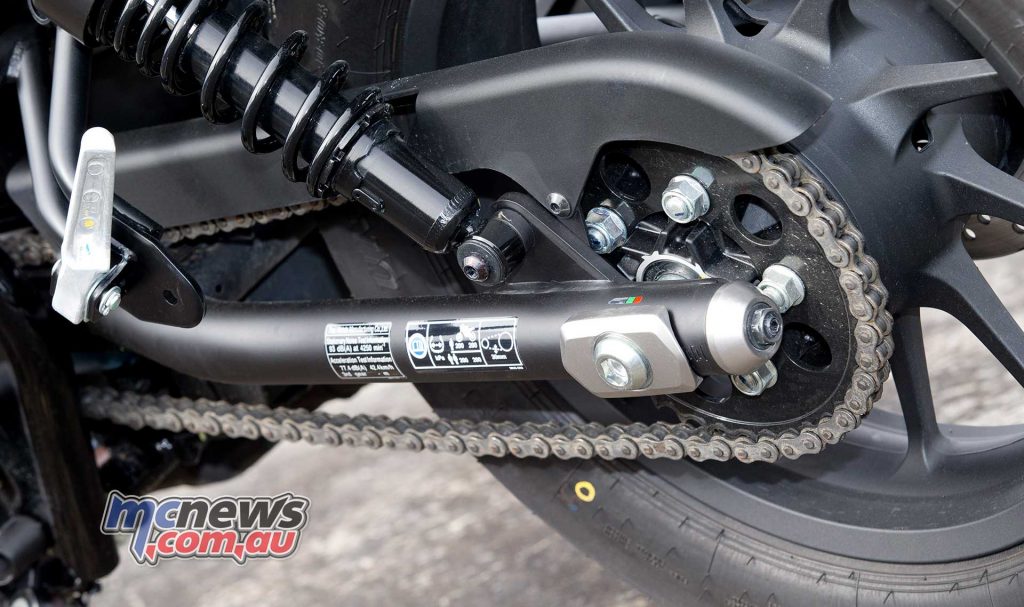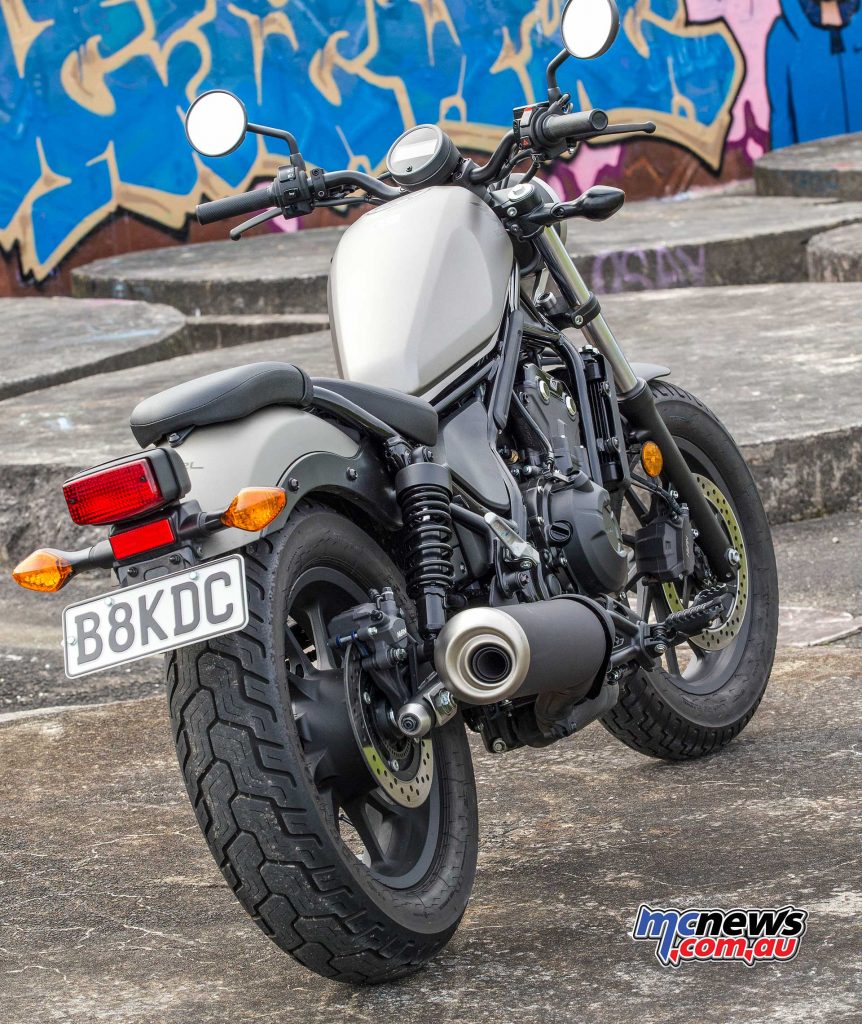Honda CMX500 Rebel Review
Motorcycle Test by Jock McLauchlan – Images by Geoff Osborne
What is a Bobber? What is Bobbing? I have to admit, I don’t really know… but when I think of bobbing I think of something floating aimlessly in the ocean, with no particular place to go. I guess generally floating about sums up bobbing in the motorcycle sense quite well.
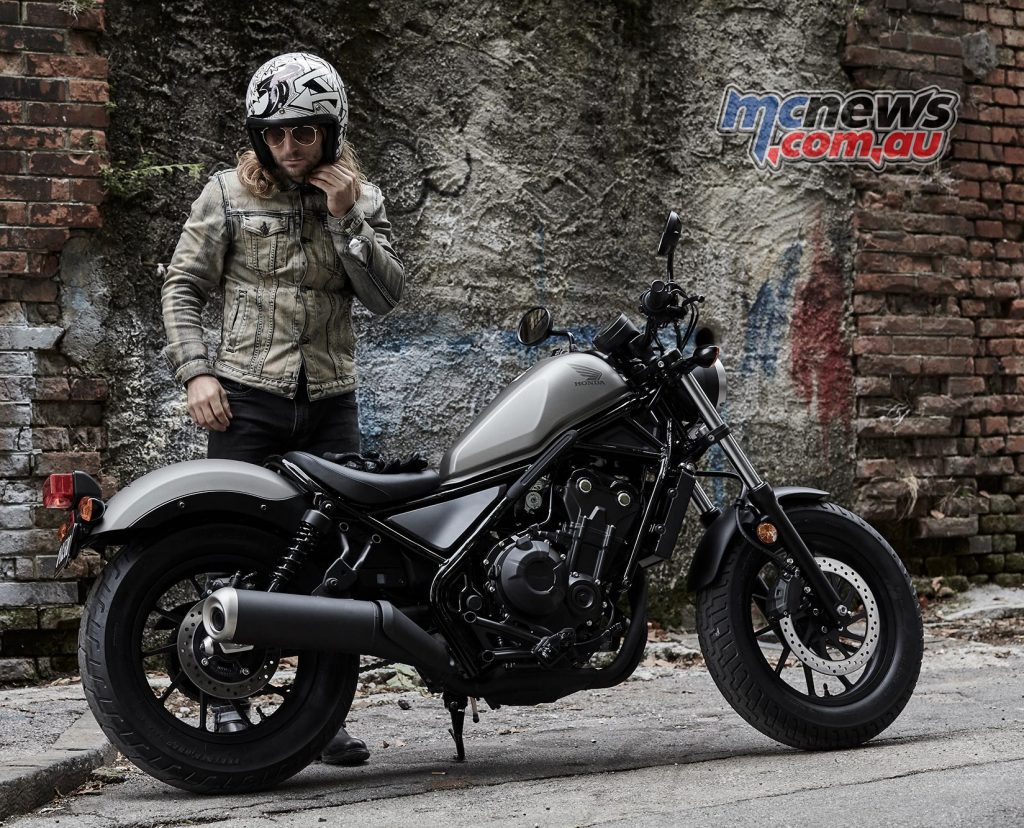
Honda has a slightly different take on bobbing with its 500cc CMX (also known as the Rebel 500 in other markets), saying it has an edginess that expresses its heritage… A heritage that goes back to 1984 when the first 450 Rebel twin rolled off the production line.
Honda also says the new CMX has an ‘animal pulsing heart’ and looks that ‘delivers swagger and trumpets rebellious presence’. Okay, so they didn’t quite say that and I’m paraphrasing the words a little… but I think they could be over-selling it just a whisker.
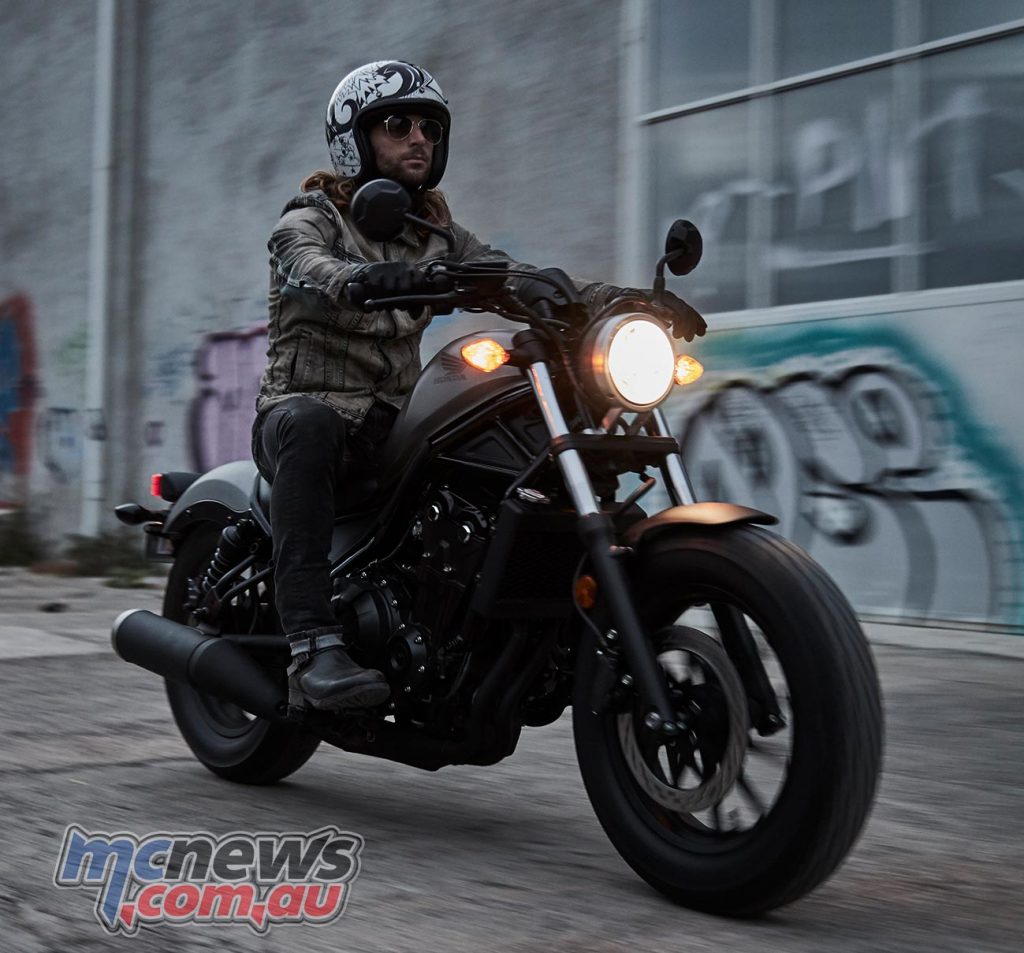
However, there is no denying the CMX looks the part, and the engine is a little stunner that is just so easy to use every day. It also goes like a cut cat if you rev it. And rev it certainly does; hold it wide open and you will be rewarded with a surprising turn of pace that won’t endear a friendly relationship with the local constabulary.
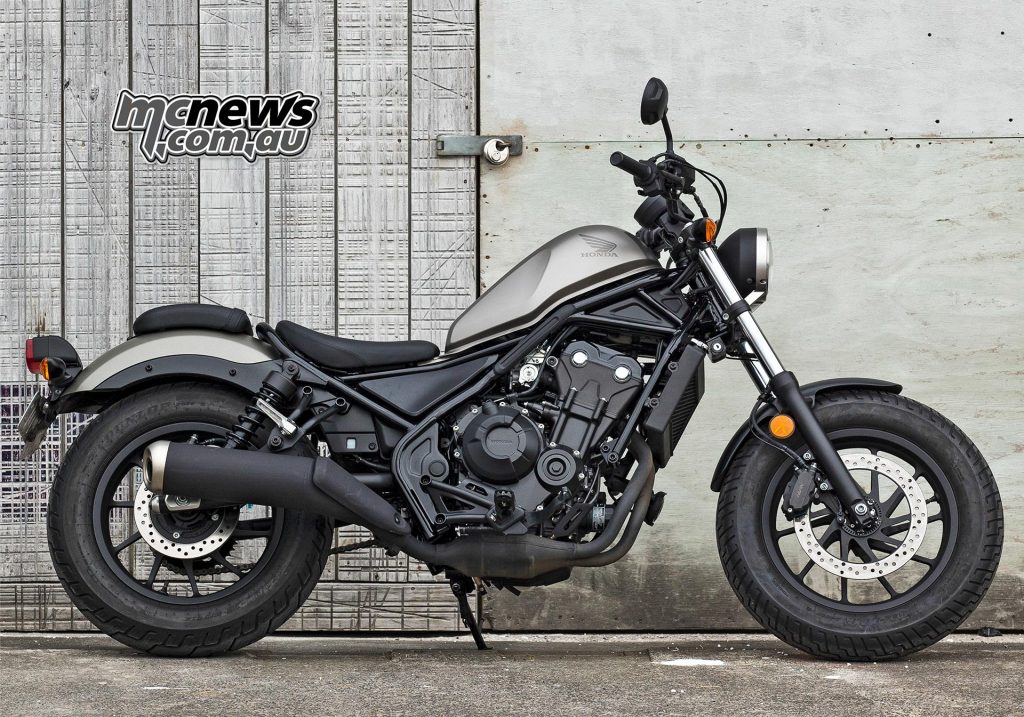
The bike’s sweet nature at lower speeds in and around town, on the commute, or just bobbing down for the daily coffee fix will endear it to all comers. Truly, the 471cc, liquid-cooled, four-valve, DOHC parallel twin engine is a little gem.
It’s totally seamless in power delivery with a very wide spread and has an easy, forgiving manner. This motor is close to perfect for ‘bobbing about’. The smooth-shifting six-speed gearbox has nicely spaced ratios that offer a gear for everything the CMX is likely to encounter.
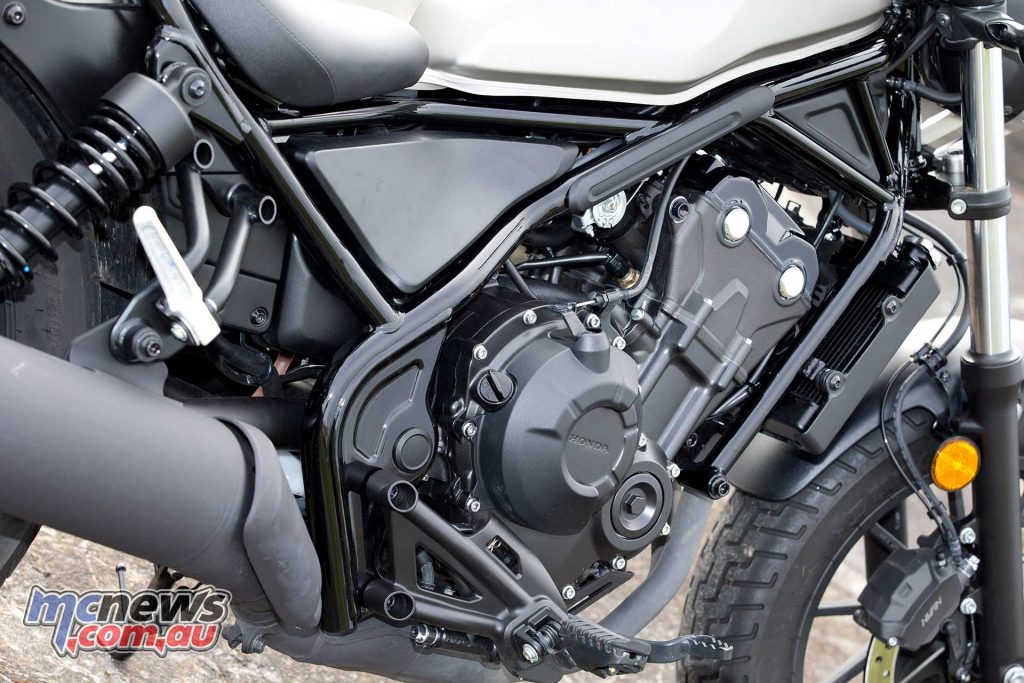
The chassis, riding position and fat tyres also contribute to its comfort, practicality and ease of everyday use. Starting with the chassis, a 28° castor angle offers relaxed steering that suits the machine well, while still enabling reasonably agile and confident manoeuvring.
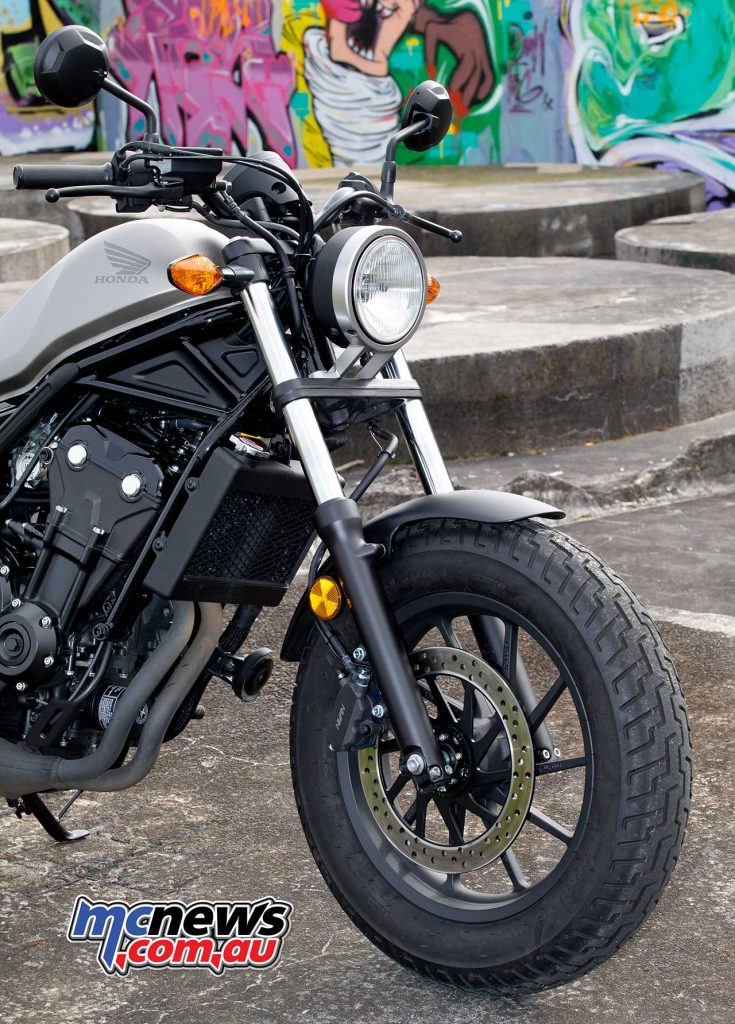
The 41mm forks with 122mm of wheel travel are soft but controlled, and offer a comfortable ride. We adjusted the five-step preload twin shocks to full hard using the C-spanner in the tool kit… while muttering about firming it up for ‘larger riders’.
It worked too, with only 100mm of travel they worked well and not once did they deliver a bone-jarring jolt to my spine, while still remaining compliant – not something I can say about many short travel bikes.
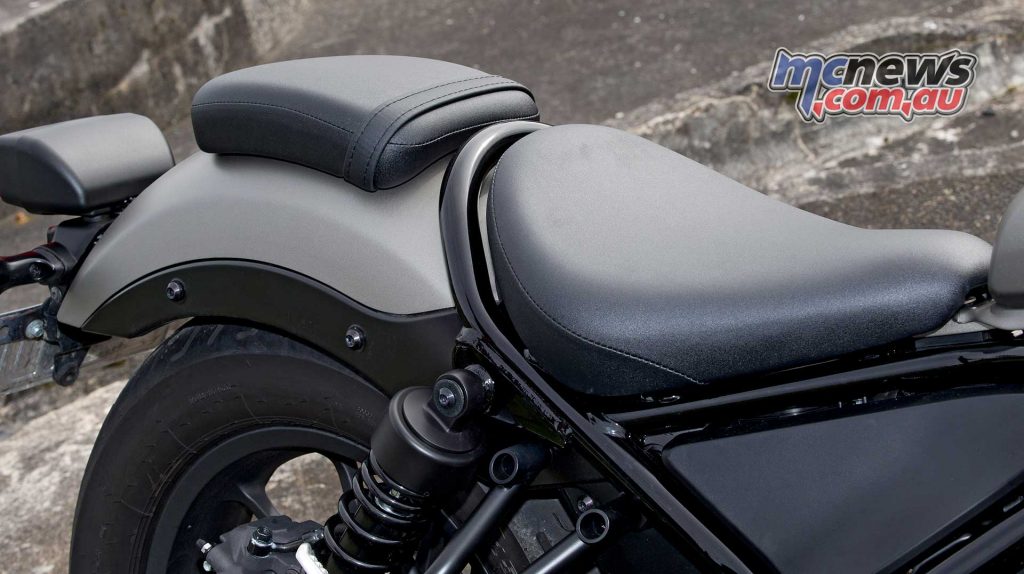
The seat is a low 690mm from the deck and quite comfy. Leg room for me was not great, but not too bad either. The right footpeg is directly below the clutch cover, which sticks out a bit and blocks the inside of the peg a little. This annoyed me to start with, as I could only get my boot easily onto the outside half of the peg. But I adjusted to the feeling quite quickly, accepted it and then forgot about it.
Handlebar placement it quite high, they’re fairly straight and narrow – I really liked the setup as it’s a great, commanding riding position offering excellent visibility, just perfect for commuting.
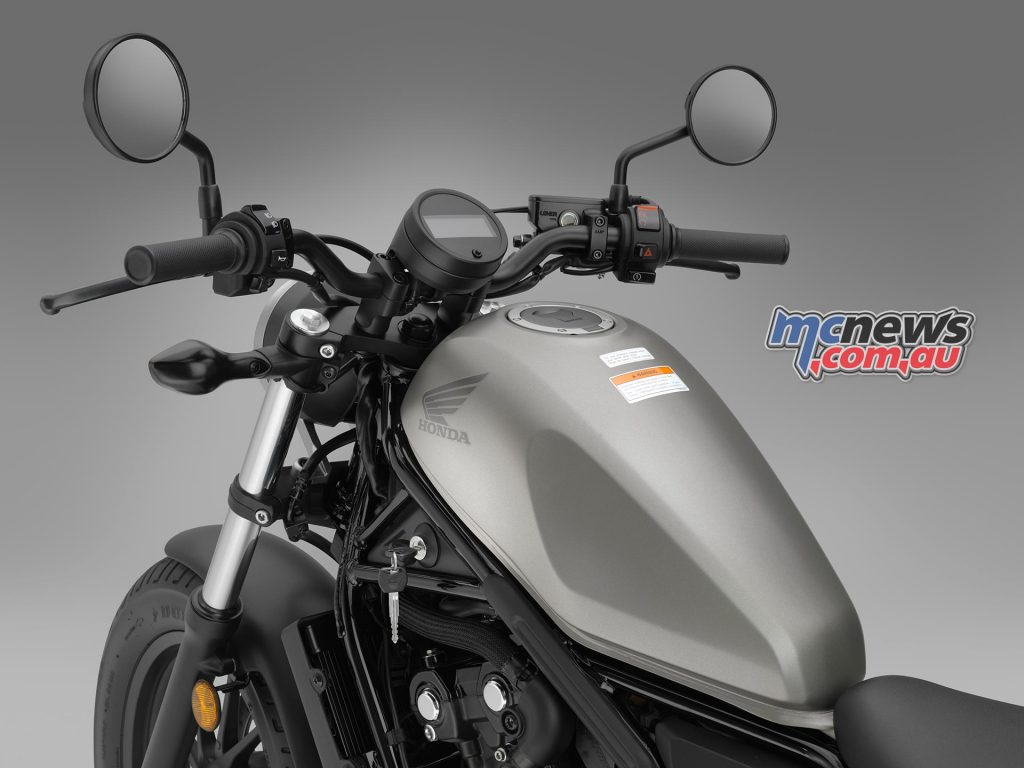
Anyone who regularly commutes on a motorcycle in many areas will know the lane-splitting drill. The ideal bike has an upright, comfortable seated position for great visibility and easy handling. The chassis needs to have relaxed stability, while still being nimble and accurate enough for obvious reasons… you have perhaps a metre of room to play with and you must get it right.
From that, a narrow bike width at the handle bars is very helpful too. I hate lane-splitting when the panniers are wider than the handlebars for example; it leaves me with no confidence to go for the gap! Then, a torquey, smooth and manageably quick engine is your perfect accomplice.
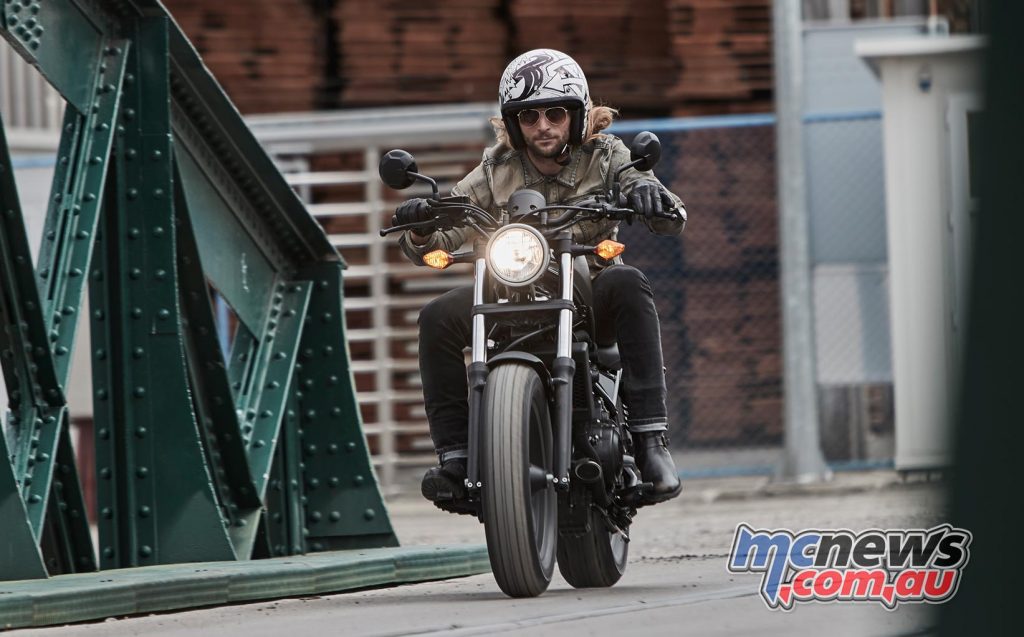
You can see where I’m going with this can’t you… yes, the mighty Honda CMX is genuinely ticking these boxes. And one more too, that I’d never really considered until I noticed the difference – the mildly fat tyres, 130/90-16 front and 150/80-16 rear with the standard low-ish air pressures just love banging over cats eyes like they’re not even there.
This is a marked difference to some bikes that really do notice each and every one they hit. Some bikes even react a little to cats eyes, particularly in the wet… so this truly was an unexpected bonus from the little Rebel.
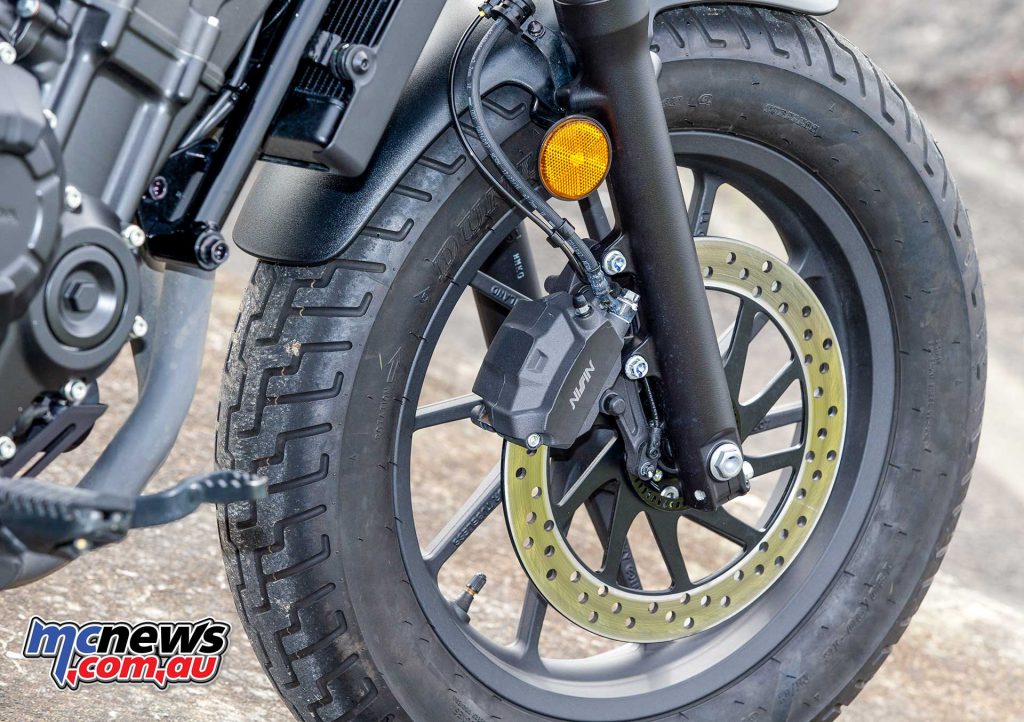
I’d say the brakes are adequate at stopping this 182kg beastie, no more, no less. They simply get the job done. With single discs at each end, the front is 296mm in diameter and the rear is 150mm – both are gripped by Nissin calipers.
Like most bikes with average brakes they’re strong on feel, but to stop in a hurry you will have to pull on the front lever fairly hard. However, in fairness to Honda, it is not designed to be ridden in anger… we are bobbing about here after all, so the brakes are actually fine.
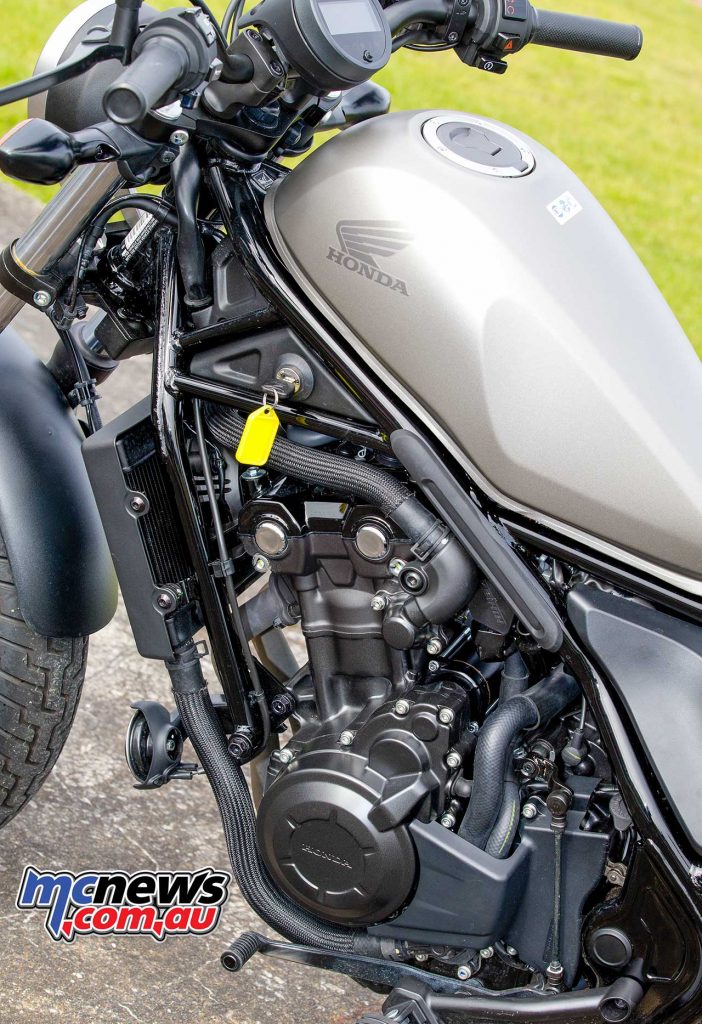
On balance The Honda CMX is a decent machine. The engine is excellent, it’s a handsome-looking machine if you’re a cruiser/bobber fan and the 11.2 litre tank will offer a reasonable range for this type of bike.
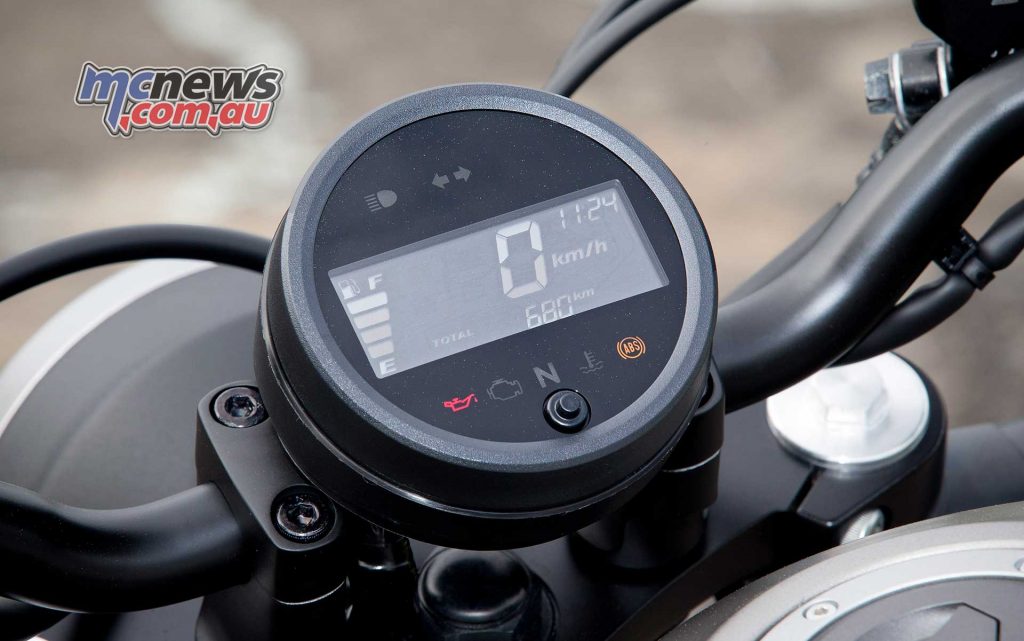
I liked the single, all LCD dash as it’s a modern take on a traditional analogue dial, but with a heap more information… Speed, tachometer, trip, fuel, temperature and clock, plus warning lights – so, pretty comprehensive.
If you’re in the market for a commuter or bobbing about bike that is comfortable, practical and super easy to ride with renowned Honda reliability then the CMX is worth a test ride at the very least.
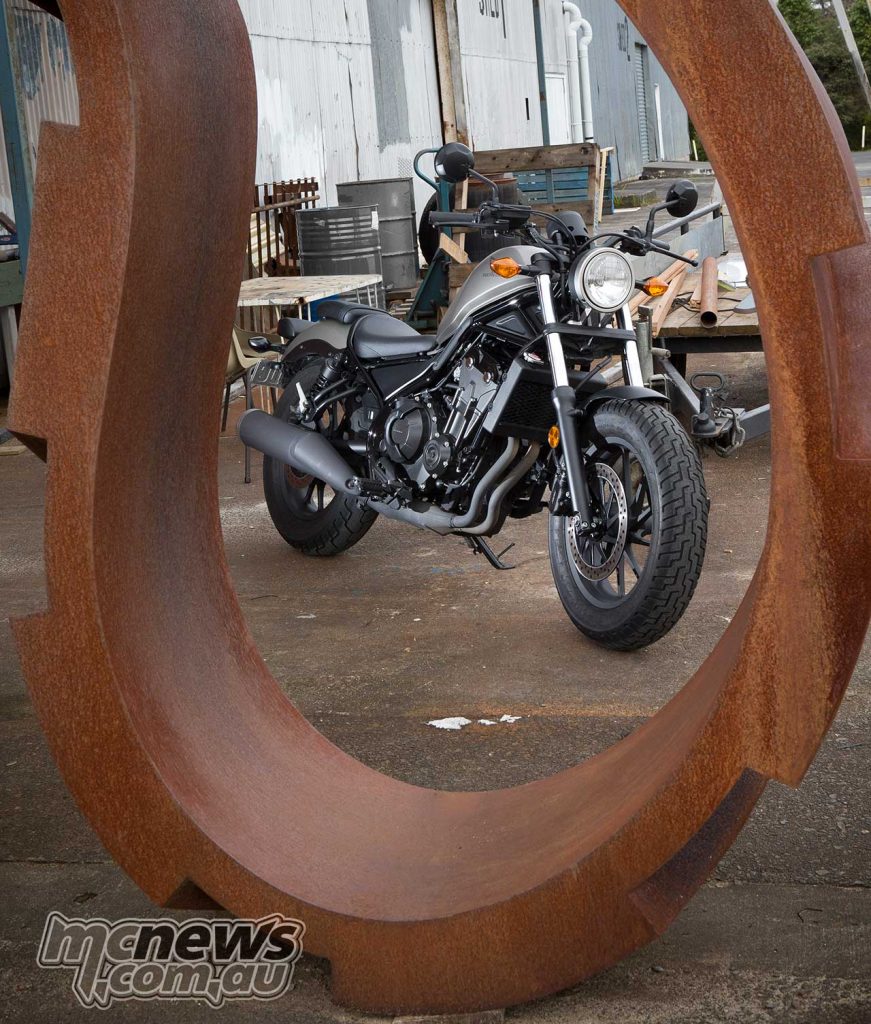
Honda CMX500 (Rebel 500) Strengths & Weaknesses
- Plus – Looks the part; great engine; pleasant to ride.
- Minus – It’s not North American… so can it really be a Rebel?
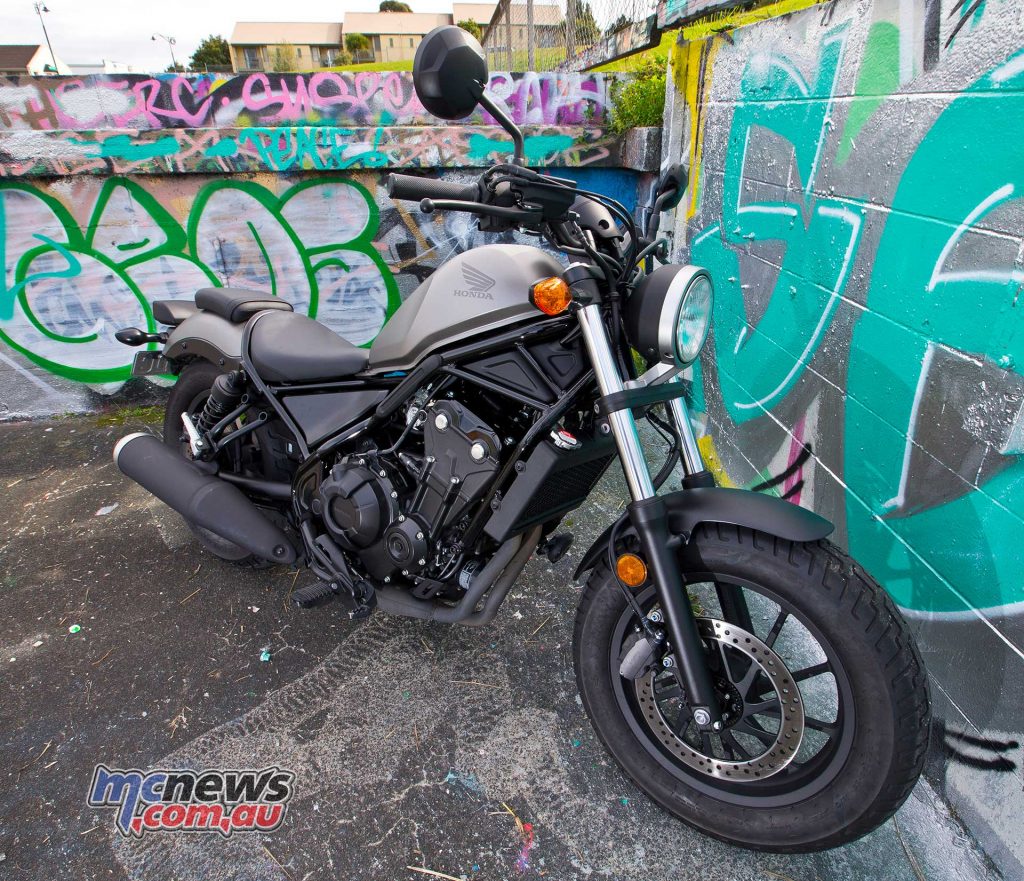
Honda CMX500 (Rebel 500) Specifications |
| Engine | 471cc, liquid-cooled parallel twin cylinder, DOHC, eight-valve four-stroke |
| Bore x stroke | 67 x 66.8mm |
| Compression | 10.7:1 |
| Power | 35kW (47hp) @ 8500rpm |
| Torque | 43Nm @ 7000rpm |
| Ignition | Computer-controlled digital transistorised with electronic advance |
| Fuelling | Honda PGM-F1 EFI |
| Clutch | Wet, multi-plate |
| Transmission | Six-speed, chain drive |
| Frame | Tubular steel with load-bearing engine |
| Rake/trail | 28°/110mm |
| Suspension | 41mm diameter conventional telescopic fork front; twin spring/damper units, spring pre-load adjustment rear |
| Brakes | Single 264mm front disc and twin piston Nissin caliper front; single 240mm disc and single piston Nissin caliper rear; |
| Tyres | 130/90-16 front; 150/80-16 rear |
| DIMENSIONS | |
| Seat height | 690mm |
| Wheelbase | 1488mm |
| Fuel capacity | 11.2 litres |
| Kerb weight | 190kg |
| Price | $7,999 +ORC |


